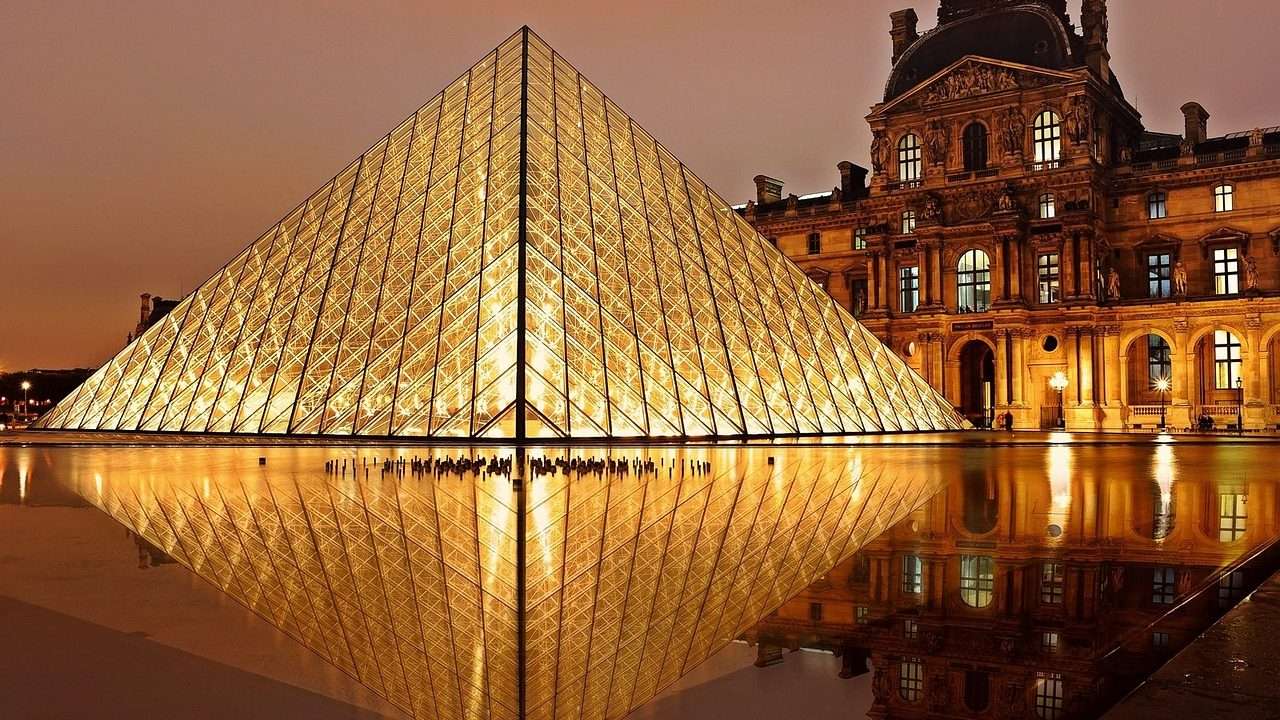
Welcome to a captivating journey through the realm of architectural landmarks, where the sublime fusion of vision, craftsmanship, and cultural significance unfolds before your eyes. These extraordinary structures stand as testaments to the boundless creativity and unwavering determination of humanity throughout the ages. In this article, we invite you to explore a selection of awe-inspiring architectural marvels that have left an indelible mark on the world. From towering cathedrals to intricate palaces, each landmark tells a unique story of architectural brilliance and historical significance. Join us as we delve into the mesmerizing tapestry of architectural wonders that have stood the test of time.
The Sagrada Familia: A Symphony in Stone
The Enigmatic Masterpiece
Prepare to be enthralled by the sheer magnificence of the Sagrada Familia, a perpetual work of art nestled in the heart of Barcelona, Spain. Designed by the visionary architect Antoni Gaudí, this basilica is a harmonious symphony of stone and light, transcending the boundaries of traditional architectural norms. Its awe-inspiring façade, adorned with intricate sculptural details, exudes an otherworldly beauty that captivates all who behold it. As you step inside, you are enveloped by a kaleidoscope of colors streaming through stained glass windows, creating an ethereal atmosphere that evokes a profound sense of awe and wonder.
A Testament to Perseverance
The Sagrada Familia, although still under construction, stands as a testament to the enduring spirit of human perseverance. Gaudí himself dedicated the final years of his life to this ambitious project, envisioning a structure that would harmonize nature, religion, and architecture in perfect unison. The basilica's completion, slated for the 21st century, relies on the collaborative efforts of architects, artisans, and craftsmen who have dedicated themselves to realizing Gaudí's extraordinary vision. The ongoing construction process is a living testament to the notion that some creations are truly timeless, transcending the boundaries of space and time.
The Great Wall of China: A Monument of Human Tenacity
An Iconic Wonder
Embark on a journey across the vast landscapes of China and behold the awe-inspiring grandeur of the Great Wall. Spanning over 13,000 miles, this architectural triumph stands as a testament to the indomitable spirit and unwavering determination of the ancient Chinese civilization. As you trace the meandering path of this colossal structure, you'll witness its awe-inspiring scale and intricate construction, which allowed it to serve as an impenetrable defense against invaders. The Great Wall of China is not only a physical testament to human tenacity but also a powerful symbol of unity and national pride.
A Tapestry of History
Beyond its sheer magnificence, the Great Wall of China weaves together the threads of a rich and storied history. Constructed over several centuries, the wall witnessed the rise and fall of dynasties, served as a strategic military stronghold, and facilitated cultural exchanges along the ancient Silk Road. It stands as a living testament to the craftsmanship and ingenuity of the countless laborers who toiled to erect this monumental structure. As you traverse its ancient ramparts, you'll find yourself immersed in a living history, where the echoes of the past whisper tales of triumph and resilience.
The Taj Mahal: A Jewel of Eternal Love
A Serenade in Marble
Prepare to be enchanted by the resplendent beauty of the Taj Mahal, an architectural gem nestled on the banks of the Yamuna River in Agra, India. Commissioned by Emperor Shah Jahan as a mausoleum for his beloved wife, Mumtaz Mahal, this ethereal masterpiece is an ode to eternal love. The Taj Mahal's gleaming white marble façade, adorned with intricate carvings and inlaid precious stones, casts a spellbinding aura that evokes a sense of timeless romance and serenity. As you step into its hallowed grounds, you'll be transported to a realm where love and art intertwine in perfect harmony.
A Testament to Mughal Splendor
The Taj Mahal stands as a testament to the grandeur and sophistication of the Mughal Empire, which reigned supreme over the Indian subcontinent during the 16th and 17th centuries. Its architectural brilliance blends elements of Persian, Islamic, and Indian styles, creating a unique fusion that showcases the empire's rich cultural heritage. The meticulous craftsmanship and attention to detail evident in every nook and cranny of the Taj Mahal pay homage to the skill of the artisans and laborers who dedicated their lives to bringing this opulent vision to life. It is a timeless symbol of the empire's enduring legacy.
The Acropolis of Athens: A Glimpse into Ancient Greece
The Cradle of Democracy
Prepare to step back in time and behold the majesty of the Acropolis, perched atop a rocky outcrop overlooking the vibrant city of Athens, Greece. This architectural marvel, dating back to the 5th century BCE, is a testament to the ingenuity and artistic prowess of the ancient Greeks. At its heart stands the iconic Parthenon, an enduring symbol of classical architecture and the birthplace of democracy. The intricately carved columns and pediments pay homage to the gods and goddesses of Greek mythology, while the surrounding temples and structures transport visitors to a bygone era of intellectual and artistic flourishing.
Preserving Ancient Legacy
The Acropolis of Athens stands as a testament to the resilience of ancient Greek civilization and its profound impact on the world. Despite enduring centuries of war, weathering, and human intervention, this architectural masterpiece has been meticulously preserved and restored to ensure future generations can witness its timeless splendor. The ongoing efforts to safeguard the Acropolis and its sacred structures are a testament to the importance placed on preserving our shared human heritage. As you wander through its hallowed grounds, you'll gain a deeper understanding of the immense cultural and historical legacy left by the ancient Greeks.
Frequently Asked Questions (FAQs)
Q1: How were these architectural landmarks constructed?
Answer: The construction techniques and materials used for these architectural landmarks vary depending on the time period and geographical location. For example, the Sagrada Familia was built using a combination of stone, brick, and reinforced concrete, employing innovative methods such as hyperboloid structures and catenary arches. The Great Wall of China was constructed using stone, brick, tamped earth, and wood, with watchtowers strategically placed along its length. The Taj Mahal was built primarily with white marble, adorned with intricate inlay work using precious and semi-precious stones. The buildings of the Acropolis of Athens were predominantly constructed using Pentelic marble, renowned for its exquisite quality.
Q2: What cultural significance do these landmarks hold?
Answer: These architectural landmarks hold immense cultural significance as they embody the values, beliefs, and achievements of the civilizations that built them. They serve as powerful symbols of national identity and pride, representing the artistic, intellectual, and technological achievements of their respective eras. Additionally, these landmarks often hold religious or spiritual significance, acting as places of worship, pilgrimage, or remembrance.
Q3: How do these landmarks impact tourism?
Answer: Architectural landmarks have a profound impact on tourism, attracting visitors from around the globe who are eager to witness their splendor and learn about their historical and cultural significance. These landmarks serve as major tourist attractions, contributing to the local economy and promoting cultural exchange. The tourism industry surrounding these architectural wonders supports various businesses, such as hotels, restaurants, tour guides, and souvenir shops, while also fostering appreciation and understanding of diverse cultures.
Q4: Are these landmarks protected by any organizations?
Answer: Yes, these architectural landmarks are protected by various organizations at both national and international levels. For instance, the Sagrada Familia is a UNESCO World Heritage site, ensuring its preservation for future generations. The Great Wall of China is also a UNESCO World Heritage site and is protected by the Chinese government. The Taj Mahal is under the jurisdiction of the Archaeological Survey of India, which oversees its conservation. The Acropolis of Athens is managed by the Hellenic Ministry of Culture and Sports, which implements measures to safeguard its structural integrity.
Q5: Can visitors explore the interiors of these landmarks?
Answer: Yes, visitors can explore the interiors of these architectural landmarks to varying extents. The Sagrada Familia allows visitors to experience its breathtaking interior spaces, including the nave, chapels, and crypt. However, certain areas may be restricted due to ongoing construction. The Taj Mahal welcomes visitors into its main mausoleum, while the surrounding gardens and structures offer additional opportunities for exploration. The Acropolis of Athens allows visitors to explore the Parthenon, Erechtheion, and other ancient structures, offering a glimpse into the architectural splendor of ancient Greece. However, certain areas may be off-limits for preservation purposes.
Conclusion
As we conclude this journey through the captivating world of architectural landmarks, we invite you to marvel at the ingenuity, artistry, and cultural significance encapsulated within these extraordinary structures. From the mystical allure of the Sagrada Familia to the enduring fortitude of the Great Wall of China, from the eternal love immortalized in the Taj Mahal to the intellectual legacy of the Acropolis of Athens, these landmarks stand as living testaments to the power of human creativity and the indelible mark we leave on the world.
Let us celebrate and cherish these architectural marvels, for they are not mere structures of stone and mortar, but portals that transport us across time and space, connecting us with the brilliance of our ancestors. As we continue to explore and appreciate these landmarks, we honor the legacy of those who came before us and gain a deeper understanding of our shared human heritage. Let us embrace the wonder and beauty that architectural landmarks bestow upon us, and may their splendor continue to inspire generations to come.










